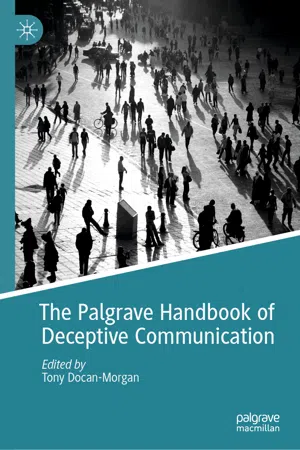Antiquity Through the Middle Ages
It is in our nature to mislead, but we also generally dislike being misled, with a few exceptions (
art, fiction,
magic, surprise parties, etc.). Consequently, human societies throughout history have punished those who deliberately mislead and treated the question of how to detect misleaders as serious food for thought. In fact, some of the earliest recorded thoughts about
deception detection also happen to be about food. In the sacred Hindu
Yajurveda, written around 1000 BCE, instructions are offered to royalty for detecting spies disguised as servants with the intent of poisoning food:
A person who intends to poison food may be recognized. He does not answer questions, or they are evasive answers; he speaks nonsense, rubs the great toe along the ground, and shivers; his face is discolored; he rubs the roots of the hair with his fingers; and he tries by every means to leave the house. (Chand, 1980, p. 54)
In ancient China, food itself was used as a detection tool. People suspected of lying were sometimes forced to chew dry rice while listening to the accusations against them. Afterward, the expectorated rice was examined, and if deemed too dry, it was considered evidence of guilt (Ford, 2006). Greek biographer Plutarch relates an episode in which celebrated anatomist and physician Erasistratus (300–250 BCE) treated food aversion as a deception cue. The physician was asked by Syrian king Seleucus Nicator to examine his son Antiochus, who had stopped taking meals and was wasting away. Noting the prince’s mysterious illness started right after his widower father had taken a beautiful new bride, Erasistratus suspected the cause was the prince’s efforts to conceal from the king his infatuation with the new queen. Reinforcing this conclusion was his observation that during a physical examination, the prince’s pulse quickened when she entered the room (Trovillo, 1939). In each of these ancient cases, the strategy for detecting deception was predicated on an assumption that the somatic expression of anxiety (shifting posture, dry mouth, loss of appetite, heightened pulse, etc.) is evidence of deceptive intent. Despite numerous conceptual and empirical challenges to this assumption, it has continued to dominate deception research and theory in the modern era (Knapp, McGlone, Griffin, & Earnest, 2016).
The subject of deception was integral in the establishment and prescribed conduct of all major religions. Truthfulness is generally recommended in the Quran, but it also says Muslims are permitted to lie, especially to non-believers, if the lie benefits Islam. Judaism and Christianity placed deception at the front and center of their narratives of the human condition. As historian Dallas Denery (2015) aptly put it, the Book of Genesis tells us “it took God six days to create the world and the Devil two deceptive sentences to undo it” (p. 21). Christian theology often advocated the belief that no lie was permitted among believers. In his treatise De Mendacio (“On Lying”), St. Augustine of Hippo (354–430) famously argued that lying violates religious precepts and, like a disease, infects personality and destroys integrity (Muldowney, 2002). Living for truth, no matter what the consequences, is to live for God. Augustine not only argued for the moral bankruptcy of lying, but also went on to say that God is perfectly capable of extricating from trouble those who stand fast in the truth. Many subsequent and influential theologians embraced Augustine’s absolutist stance, such as St. Thomas Aquinas (1225–1274) and John Wesley (1703–1791), as well as moral philosopher Immanuel Kant (1724–1804).
Augustine’s treatise also provided a Christian rationale for the “trial by ordeal,” in which an accused liar’s innocence was tested by a physical challenge. Importantly, this detection strategy was based not on any
theory about the
psychophysiological processes associated with stress or guilt, but purely on religious faith. If the accused were innocent, according to this reasoning, God would intervene and protect them from harm. Although trials by ordeal existed long before the Common Era, medieval clergy were particularly creative in devising painful plights from which only divine intervention could spare the innocent (Trovillo,
1939). Trials by fire required the accused to walk over molten coals, touch their tongues to red-hot pokers, or remove a stone from a boiling cauldron; trials by water submerged suspects rope-bound and headfirst into a cold stream and acquitted only the survivors (unless accused of sorcery—witches were thought able to float); trials by poison forced defendants to swallow nightshade and live through the dangerous fever that followed; etc. However, the clergy reserved for accused liars within their ranks the trial by ingestion, or
Corsnaed, which hardly seems to count as an ordeal (Mackay,
1857):
A piece of barley bread and a piece of cheese were laid upon the altar, and the accused priest, in his full canonicals and surrounded by all the adjuncts of Roman ceremony, pronounced certain conjurations, and prayed with great fervency for several minutes. The burden of the prayer was that if he were guilty of the crime laid to his charge, God would send the angel Gabriel to stop his throat, and he might not be able to swallow the bread and cheese. There is no instance upon record of a priest having been choked in this manner. (p. 314)
